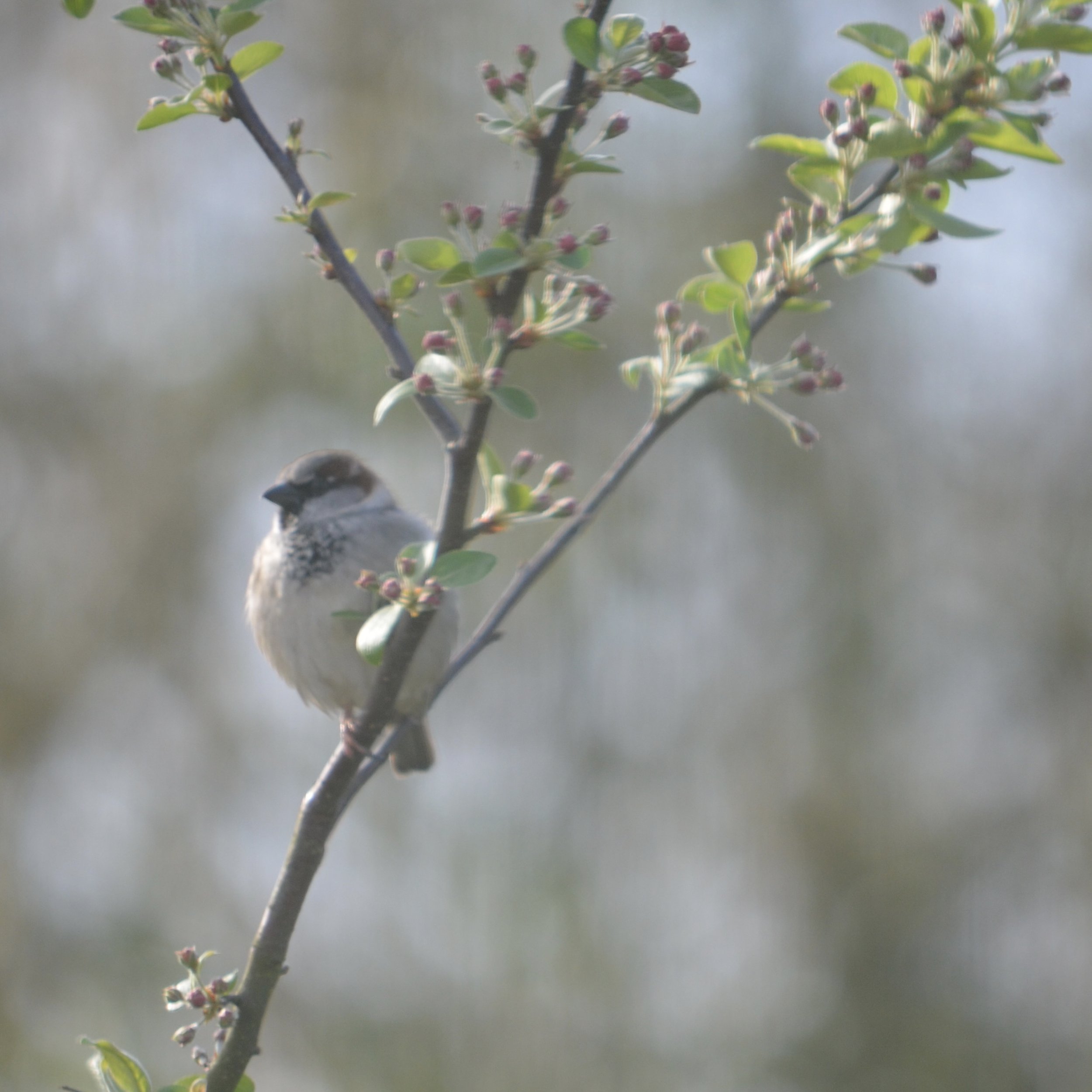Support your local sparrow..
My early memories are of birds and nature.
Early and deep in my psyche must have been implanted the calls and song of the house sparrow (Passer domesticus).
Male house sparrow perched on Malus ‘Evereste’.
House sparrows are described as ‘anthrodependent’: requiring human presence. I’ve read that they may have emerged as a species around the time our neolithic ancestors began harvesting grains and followed humans as agriculture spread. House sparrows became ubiquitous wherever humans lived, boosted by an enzyme in their gut that enabled them to digest processed cereals.
They were plentiful on the Heathfield Estate in Basford, Nottingham where I lived until the age of three. They were abundant too on our subsequent move to our new home on the newly-built Clifton Estate , Nottingham.
Although I’m not widely-travelled I’ve heard the hypnotic crex-crex of corncrake on Iona; listened in awe at the eerie song of storm petrels from the Iron Age stone broches on Moussa, shaken my head at the mystery of stone curlews calling at twilight on Minorca, marvelled at the song of the golden oriole at Lakenheath better suited to a dense rain forest than Suffolk and been spellbound at the song of the nightingale at Minsmere.
Yet, somehow, it is the chirrups of our house sparrows that stop me in my tracks. Everytime.
The high-water mark of our sparrow populations was possibly in the ’60’s. House sparrows remain widespread across the UK but, at the same time, have declined in numbers to such an extent that they are now on the British Trust for Ornithology (BTO) red list of ‘birds of conservation concern’.
In the 2000’s we had a small population in our Ravenshead, Nottingham garden but our neighbours’ new plastic facias and soffits removed nesting sites and put paid to them. The sparrows never returned and this loss of nesting sites reflected in every town, village and city has been part of the sparrow story. Sparrows are site-faithful and reluctant to move to new areas.
They love dense hedges where they can gather safe from sparrowhawk predation. The dense hedges in which they gather to socialise seem to be sooo last year and are often at a premium.
Sparrows leave their human habitations after breeding and form flocks foraging in stubble fields. The loss of stubble fields to crops like winter wheat has made winter feeding more of a challenge. Winter feeding enables the birds to enter the breeding season in sound physical condition. They have two or sometimes three broods in a season.
The use of pesticides that have destructed invertebrate populations have impacted sparrows need to feed their young has been another factor in their decline.
Their health has also been affected by parasites.
Ray with our completed boxes ready to be sited..
With community involvement we made and sited thirty house sparrow nest boxes in the nearby retirement village in 2024. All with the requisite 32mm entrance hole. No success in year one but with hopes for this year. Sparrows are described as ‘neophobic’ - shy of new features.
Two weeks ago I spluttered into my coffee! The chirps of a male house sparrow just outside our kitchen door!
After some gable repairs we had re-sited a house sparrow ‘colony’ box on our kitchen gable - more in hope than expectation …
I think our bird must be a young male, setting himself up in the world and prospecting for new territory. He’s been present for two weeks, bewitching me with his song which seems to have a voice-casting quality also enabling him to sing two elements of his song simultaneously. He sings from different vantage points including a crab apple, a dense privet hedge and from the nest box itself. He can be heard calling from a neighbours’ garden too, leading to irrational feelings on the part of this adult….
I’m looking out for whether the chirpy chappy’s efforts have been rewarded with a female but no signs yet. Perhaps she’s around secretly.
Let’s hope he sticks around and finds a mate.


